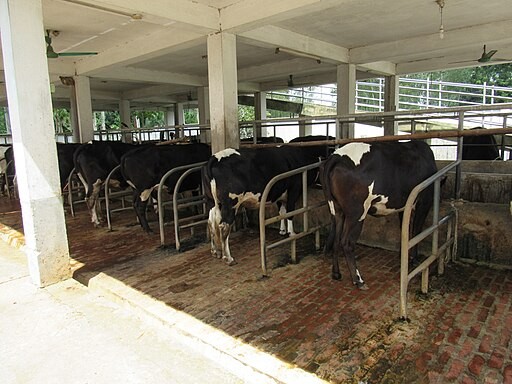Mammal-to-mammal transmission of bird flu raises new concerns regarding the ability of the H5N1 virus to spread.
Fatal Infections From Bird Flu
On March 16, cows on a dairy farm in Texas began to show symptoms of the highly pathogenic avian influenza virus (HPAI), also known as H5N1. Although the symptoms were commonplace, their milk production significantly dropped and turned thick and creamy yellow. The following day, the cats on the farm, which had consumed some of the raw milk from the infected cows, also became sick.
While the cows largely recovered, their feline companions were not so lucky. The cats developed stiff body movements, depressed mental states, circling, loss of coordination, discharge from their eyes and noses, and blindness. By March 20, more than half of 24 cats had died from the bird flu.
In a study published by the Centers for Disease Control and Prevention (CDC), researchers revealed that the infected cats had the H5N1 virus in their lungs, hearts, brains, and eyes. The authors also noted that contaminated milk was the most probable source of fatal cat infections.
Although it cannot be entirely ruled out that the feline animals got sick from consuming infected wild birds, the milk they drank from bird flu-stricken cows is full of virus particles. This means there could be cross-species mammal-to-mammal transmission of the H5N1 virus, raising concerns regarding the potential for the virus to spread within mammal populations.
The outbreak from the Texas farm could indicate that the bird flu virus is getting better at jumping to mammalian species. According to the US Department of Agriculture, the presence of the H5N1 virus in a dairy farm in Texas marks the first time H5N1 has ever been reported to cross over to cows. Since then, the agency has received reports of infections in 34 herds in Colorado, North Carolina, South Dakota, Ohio, Idaho, New Mexico, Michigan, and Kansas.
READ ALSO: Bird Flu Outbreak in Dairy Cows Is Extensive; Traces of Virus Found in 20% Commercial Milk Sample
Risk of a Global Outbreak
Bird flu emerged in 1996, but since 2020, the number of bird infections and infected mammals has grown exponentially. This has led to the deaths of tens of millions of poultry, infected wild birds, and land and marine mammals.
Cows are the latest addition to the surprisingly broad range of H5N1. Over the past years, a global outbreak has devastated wild bird populations and poultry farms, and experts have documented unexpected and deadly outbreaks in mammals. Since 2022, the USDA has discovered H5N1 in more than 200 mammals, from cats in zoos to bottlenose dolphins, foxes, black bears, polar bears, squirrels, skunks, raccoons, mountain lions, and harbor seals.
Earlier this month, a worker in a dairy farm in Texas was reported as the second American to become infected with avian influenza. According to the CDC, the patient showed a mild infection with eye inflammation as the only symptom. The worker is reported to be isolated and recovering well after being treated with oseltamivir.
According to Dr. Wenqing Zhang, this is the first case of a human being infected by bird flu by a cow. Although there is no evidence that H5N1 spreads among humans, scientists and public health experts have expressed concern that it could happen.
RELATED ARTICLE: H5N1 Bird Flu Has Spread to Humans With 'Extraordinarily High' Mortality Rate, WHO Warns
Check out more news and information on Bird Flu in Science Times.
RELATED ARTICLE: H5N1 Bird Flu Has Spread to Humans With 'Extraordinarily High' Mortality Rate, WHO Warns
Check out more news and information on Bird Flu in Science Times.



![Some Brain-Injured Patients Who Died After Life Support Was Withdrawn May Have Survived, Recovered Some Level of Independence 6 Months After Injury [Study]](https://1721181113.rsc.cdn77.org/data/thumbs/full/53613/89/56/50/40/some-brain-injured-patients-who-died-after-life-support-was-withdrawn-may-have-survived-recovered-some-level-of-independence-6-months-after-injury-study.jpg)











